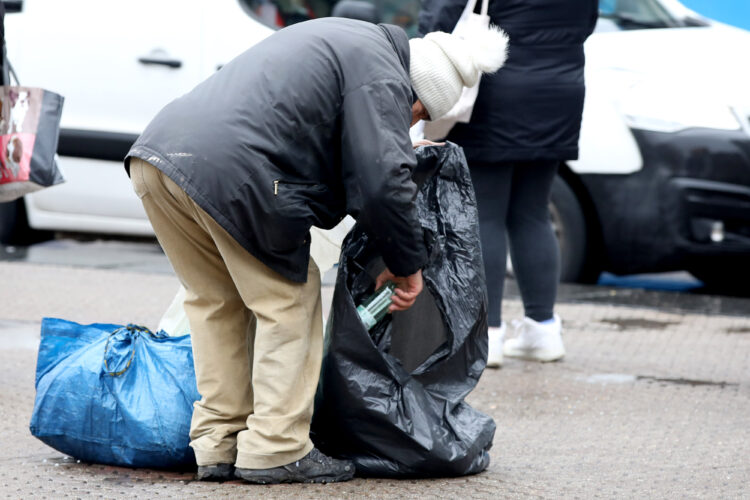
The at-risk-of-poverty rate in Croatia was 19.3 per cent last year, according to the Croatian Bureau of Statistics (DZS). The data shows that older citizens, singles, single parents and residents of Pannonian Croatia are most at risk of poverty.
The highest at-risk-of-poverty rate, 34.8 per cent, applies to people over the age of 65. The most vulnerable are singles over 65, for whom the risk of poverty rises to a high 59.9 per cent.
The highest at-risk-of-poverty rate is among the over-65s
The at-risk-of-poverty rate is highest for the inhabitants of Pannonian Croatia at 29.4 per cent. In Northern Croatia, it drops to 17.7 per cent, and according to the classification of territorial units for statistics (NUTS), it is slightly lower in Adriatic Croatia at 17.5 per cent, followed by the city of Zagreb at 10.5 per cent.
Looking at average salaries or pensions, the poverty risk threshold for a single-person household in 2023 is 5,924 euros per year, according to DZS data. For a household with two adults and two children under the age of 14, a much larger sum must be set aside. In this case, the amount is 12,440 euros per year.
The highest at-risk-of-poverty rate in relation to age and gender structure was found for people over 65, reaching 34.8 per cent. It should be added that the at-risk-of-poverty rate for women of this age was 38.8 per cent, while for men it was 29.3 per cent, writes the Mirovina.hr portal.
A great risk also for single parents
The highest at-risk-of-poverty rate in households without dependent children was also found in single-parent households, namely in those consisting of people aged 65 or older, namely 59.9 per cent.
The situation is no better for households with dependent children, as households consisting of one parent with dependent children have the highest poverty risk rates. For them, the poverty rate was 24.4 per cent, while in households with two adults and three or more children, the at-risk-of-poverty rate was 20.5 per cent.
However, it is necessary to distinguish between the at-risk-of-poverty rate and a person’s actual poverty. The at-risk-of-poverty rate is the percentage of people whose equivalised disposable income is below the at-risk-of-poverty threshold. The at-risk-of-poverty rate does not refer to information on how many people are actually poor, but rather how many of them have an income below the at-risk-of-poverty threshold.
It is important to note that the at-risk-of-poverty threshold, which is set at 60 per cent of the mean (median), is the equivalised disposable income of all people. To better understand the concepts, one should start from the household’s total disposable income, i.e. the total net monetary income received by the household and all its members in the reference period, i.e. the past year.
One in five Croatians is at risk of poverty
The calculation of the equivalised disposable income is based on the total disposable income of the household divided by the equivalent household size, which is calculated according to the modified OECD scale. More precisely, according to this calculation, the head of the household is assigned a coefficient of 1, every other adult in the household over the age of 14 and an older person a coefficient of 0.5 and children under the age of 14 a coefficient of 0.3.
This method is applied with the aim of determining a more equal share of each household member in the joint income. The average disposable income per household in 2023 was €18,843, while the average equivalised disposable income was €10,891.
According to the DZS data, 20.7 per cent of citizens were at risk of poverty or social exclusion last year. This would mean that one in five Croatians is at risk of poverty.
These indicators primarily relate to people who are at risk of poverty, are in severe material and social hardship or live in households with low labour intensity.
The measure of inequality in income distribution in 2023, also known as the Gini coefficient, was 29.7 per cent. In the case of perfect equality, i.e. if everyone had the same income, the Gini coefficient would be zero per cent. However, if the Gini coefficient is close to one hundred per cent, income inequality is greater




Kakvo je tvoje mišljenje o ovome?
Budi prvi koji će ostaviti komentar!